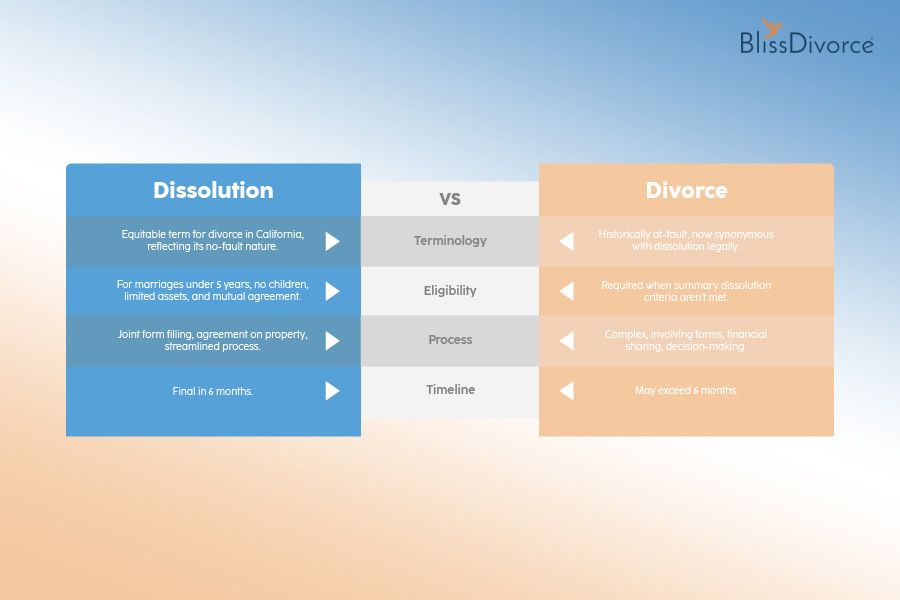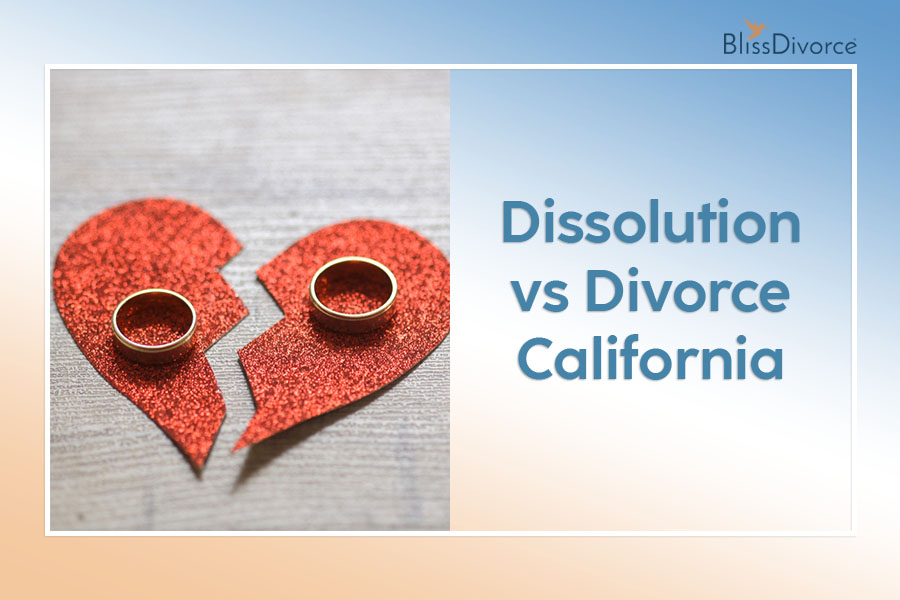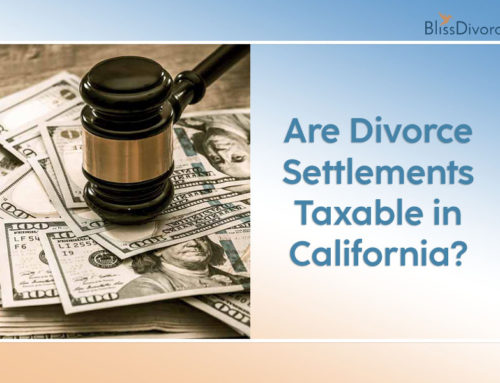If you are seeking ways to end your marriage, terms like dissolution, divorce, and separation may confuse you in terms of which one applies to your case. For example, you may wonder about the differences in dissolution vs divorce California.
So, is dissolution the same as divorce? Read on as we define each term to help clear up any confusion you may have.
Dissolution vs Divorce California
While California is among the no-fault states regarding divorce, many legal terms may make the process more challenging and confusing for spouses. So, what is dissolution of marriage in California, and what is divorce?
Dissolution of marriage is the legal term we use in California for divorce. The term was incorporated when divorce in California became no-fault in the 60s.
Due to the term “divorce” historically referring to at-fault divorces, “dissolution” is used to convey the equitable nature of modern divorce. This shows that legally, there is no distinction between the terms “dissolution” and “divorce”.
However, what you may likely be thinking of when asking about “dissolution” is “summary dissolution”. Summary dissolution is the fastest and most cost-efficient way to get a divorce without a divorce lawyer in California.

Summary dissolution: The legal process
In order to get summary dissolution, you and your spouse must work together and meet the requirements to qualify. Summary dissolution is available to you if you meet the following requirements:
- You and your spouse have been married for less than five years.
- You have no children together.
- You have less than $53,000 together and separately.
- Together, you have less than $7,000 in debt.
- Neither one of you seeks spousal support.
- Agree on splitting any shared property.
- Meet the residency requirements.
If you and your spouse meet all of these requirements, you may file with your county court and start the process. The summary dissolution process involves the following steps:
- Read Summary Dissolution Information (form FL-810) and sign it.
- Each of you fills out an Income and Expense Declaration (form FL-150) and shares the financial information with the other.
- Fill out and sign Joint Petition for Summary Dissolution (form FL-800) and sign Judgment of Dissolution and Notice of Entry of Judgment (form FL-825).
- Write up an agreement.
- File all the forms and the agreement with the local county court and pay the fee.
Divorce: The legal process
If you do not qualify for summary dissolution, you must apply for the standard divorce process. Still, before filing for divorce, check that you meet the California residency requirements.
Unlike summary dissolution, the standard divorce process is more involved, longer, and generally more expensive. There are four major parts of the divorce process in California.
- Start a divorce case (file forms including the Petition and Summons and receive a Response).
- Each spouse must share financial information.
- Make decisions in regard to the division of assets, child custody, child support, and alimony. If you cannot agree, the court will decide for you.
- Finalize your divorce.
Legal Requirements for Dissolution and Divorce in California
No matter if you qualify for summary dissolution or divorce, the residency requirements are the same for both. You or your spouse must have lived in California for at least six months. Also, one of you must live at least three months in the local county where you file for summary dissolution or divorce.
In order to file for summary dissolution, you and your spouse must be able to work together. If you cannot work together, you must file for a standard divorce. With divorce, even if your spouse does not want divorce, the process will continue.

Source: shutterstock.com / Photo Contributor: Gatot Adri
Comparison of Dissolution and Divorce Processes
It takes six months to finalize once you file the forms and documents for both summary dissolution and divorce. Still, the divorce process may last longer than six months if you have trouble reaching an agreement. Going to court will drag things out even more.
In contrast, a summary resolution becomes final six months after you file with the court. Since California is a no-fault state, you may only state irreconcilable differences as the reason for wanting to end your marriage.
In both processes, the final result is a legal end to your marriage. Once the process is finalized and the judge signs off on it, you and your spouse will be legally single again.
Conclusion
What are the differences in dissolution vs divorce California? As we mentioned, “dissolution” and “divorce” mean the same: a legal end to a marriage.
However, when discussing “dissolution,” you may likely think of “summary resolution”. Summary resolution is a more cost-effective and faster way to finalize a divorce, as long as you meet the requirements to file for one.




